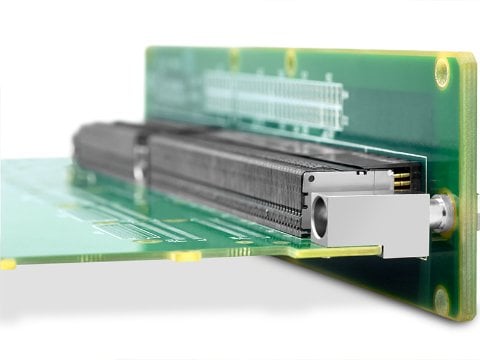- Available in 0.40 mm, 0.50 mm, 0.65 mm, 0.80 mm, and 1.00 mm pitches
- Custom pitches down to 0.30 mm
- Lidded and Open Top Sockets for ≤10 mm packages
- Lidded Sockets for 10 mm to 16 mm packages
- Center ground pin standard for all sockets
- Optional copper heat slug available for high wattage devices
- Sockets for over 80 different JEDEC standard footprints
-

Surface Mount Resistors with Outrigger Heat Sink
Smiths Interconnect’s extended CXH series provides improved power handling over conventional surface mount solutions.
-

The evolution of rail mobility and where the performance of components is critical.
The request for faster, safer and more comfortable services has grown proportionally in the rail industry over the recent years and the last two decades have seen exponential growth in the use of technology towards the evolution of very sophisticated transport system where the performance of components is more and more critical.
-

Smiths Interconnect Launches Space Qualified Version of KVPX Connector Series
The Space Qualified KVPX connectors series builds upon Smiths Interconnect's existing portfolio of ruggedized standards-compliant connectors, offering an embedded system interconnect that seamlessly integrates into high-reliability back-plane architectures.
-

Taking the Fast Bridge between Neural Networks
Neural networks have been around since the 1950s. The advent of fast, massively parallel processors like the Graphics Processing Unit (GPU) have made neural network applications like object recognition feasible. Neural networks are one means used to create Artificial Intelligence (AI). The latest iPhones now have an AI chip, primarily to offload face recognition tasks.1 Voice translation tasks would also benefit from an AI chip. Google provides voice translation as long as there is access to a cloud. The ability to translate directly from a phone without requiring Internet access to Google engines would be advantageous, and it’s possible that the iPhone is headed in that direction.


